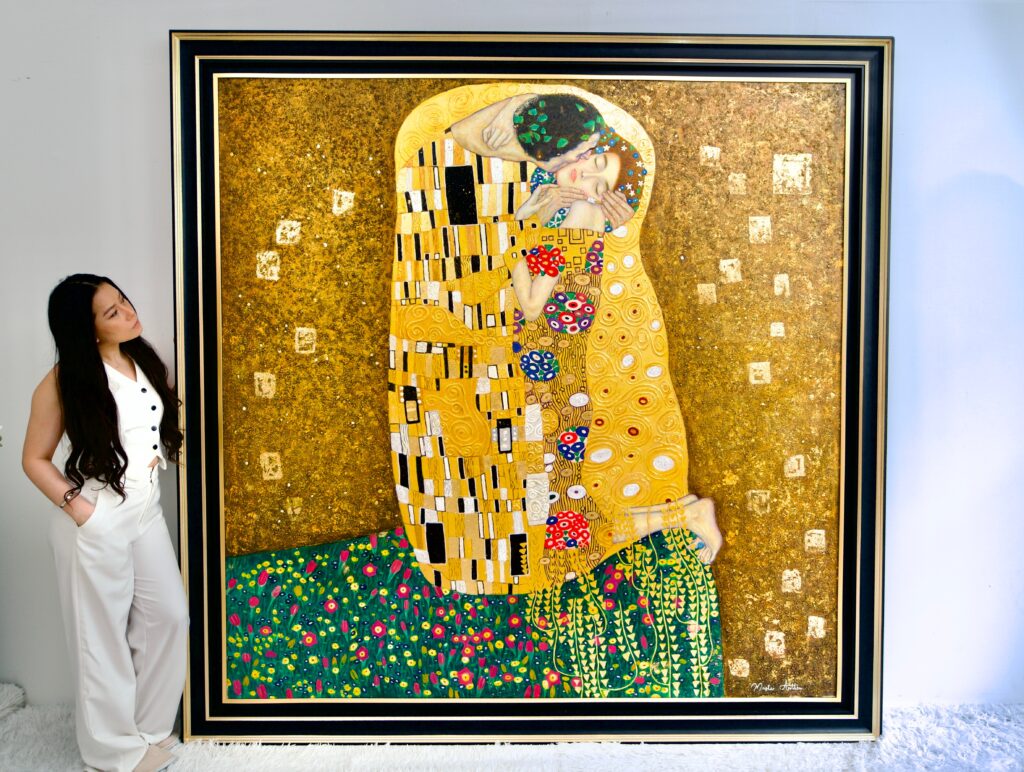Your cart is currently empty!
Celebrate 5 Years of Master Apollon with 15% OFF! 🎉code: MASTER
Description
Immerse yourself in the enchanting world of art with this exquisite oil painting reproduction of “Edgar Degas and Everiste de Valernes.” Meticulously crafted to capture the very essence of Degas’ original masterpiece, this reproduction is a testament to the artist’s unparalleled skill and vision. Each brushstroke is rendered with impeccable detail, ensuring that the vibrant colors and delicate nuances resonate with the same emotional depth as the original.
Imagine this stunning piece adorning your wall, instantly transforming your space into a sanctuary of elegance and sophistication. The graceful figures and dynamic composition invite you to step into a moment frozen in time, evoking feelings of nostalgia and admiration. Whether gracing the walls of your living room, bedroom, or office, this artwork serves not only as a visual delight but also as a profound conversation starter, sparking discussions about art, history, and the beauty of human expression.
Crafted from the highest quality materials, this reproduction stands as a symbol of artistic excellence, allowing you to own a piece of art history. It’s more than just a decoration; it’s an invitation to experience the timeless beauty of Degas’ work in your own home. Elevate your interior with this captivating masterpiece, and let it inspire wonder and admiration in all who behold it. Don’t miss the opportunity to enrich your life with this extraordinary piece of art that resonates with elegance and emotional depth.
Similar paintings
-
After the Bath – Edgar Degas
$650.00 – $3,300.00 -
After the Bath – Edgar Degas
$650.00 – $3,600.00 -
After the Bath – Edgar Degas
$650.00 – $3,300.00 -
After the Bath – Edgar Degas
$650.00 – $3,300.00 -
After the Bath or, Reclining Nude – Edgar Degas
$950.00 – $3,900.00

Master Apollon: The Art of Authentic Reproduction
With Master Apollon, rediscover the emotion of the great masterpieces through hand-painted reproductions crafted by real artists. Each canvas is created using premium quality oil paint, carefully applied to capture every detail, every nuance, and every brushstroke of the original. Our passionate and skilled artists work with the precision of master craftsmen to deliver an extraordinary result—worthy of the world’s finest museums.
- 100% Hand-Painted by Professional Artists
- Premium Oil Paint for Rich Texture and Vibrant Colors
- Exceptional Fidelity to the Original Masterpieces
- A High-End Alternative to Mass-Produced Reproductions
Frequently Asked Questions
Why choose Master Apollon over a standard reproduction?
95% of reproductions on the market are cheap copies, often mass-produced in China using low-grade materials. At Master Apollon, every artwork is hand-painted by real artists using premium oil paint. The result? An exceptional finish that stays true to the original, with rich texture and vibrant colors worthy of the great masters.
How are your reproductions made?
Our reproductions are hand-painted by talented and experienced artists. We exclusively use high-quality oil paint and durable canvases to ensure unmatched detail and depth. Each artwork is a unique creation, designed to capture the essence of the original masterpiece.
Can I order a custom reproduction?
Yes! At Master Apollon, we offer custom reproductions. Choose your favorite masterpiece from the classic works, and our artists will recreate it for you. Contact us through our form to discuss your needs and receive a personalized quote.
What are the delivery times and options?
The creation time varies depending on the complexity of the artwork (usually 2 to 4 weeks). Once completed, your reproduction is carefully packaged and shipped promptly worldwide. We will keep you informed at every step to ensure a stress-free experience.
“Say goodbye to cheap reproductions and let Master Apollon bring you excellence. Contact us today to start your artistic journey.”





